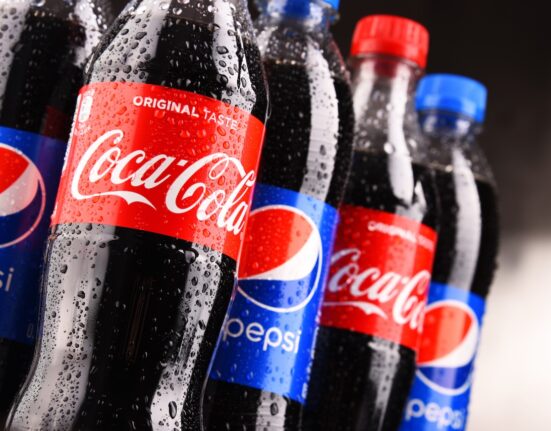Would you recognize a golden ticket if you saw one? Would it need to be shiny in bright lights, or could it be a common tool in an unexpected place that looks much like what you already do?
While you may not know what your next golden ticket will be, someone is searching for theirs. That ticket is a tool, process or service that helps advance business or industry, and it will most certainly deliver innovation.
Experts identify three types of innovation – radical, incremental and disruptive – and it is not reserved for new products. It can be found in every area of business including products, services, processes, marketing and more.
As you might expect, radical innovation changes the very essence of a market, a business or a category. It creates something new and gives us what we didn’t know we needed. On the other hand, incremental innovation is an easier and safer way to move the needle of change by adding on to what we already do and making it better. Finally, disruptive innovation is about understanding consumer behavior and taking something that exists, changing it, then scaling it to serve the masses.
It is said food production has changed more in the last 200 years than in the previous tens of thousands of years of human civilization. These changes have been aided by science and the advancement of machines starting as early as 1786 with the first threshing machine and unprecedented increases in agricultural production throughout the Industrial Revolution. By the 1980s the personal computer had been released and the internet was taking shape making way for the emergence of the digital revolution.
The intersection of the digital revolution and disruptive innovation is exactly where we’ve experienced deep changes in business and the consumer experience. In fact, one of the most disruptive revolutions has taken place in video streaming that today penetrates nearly every aspect of our life.
A wasted golden ticket
The rise of video streaming and the death of Blockbuster isn’t news for most. What some may not realize is that Blockbuster was handed a golden ticket, and promptly threw it away. They had the opportunity to purchase Netflix for a bargain in its early days before they were a streaming service when they were a basic mail-in movie rental service.
So how much was that golden ticket you ask? The asking price for Netflix at the time was a mere $50 million, but the offers were rebuffed by the movie rental store giant. Stuck in their ways, Blockbuster insisted that going to the rental store was part of their customers’ movie experience and they wanted nothing to do with the mail-in rental service.
So what didn’t Blockbuster see that Netflix did? Was it about what they didn’t see, or who they didn’t hear? Blockbuster’s biggest failure might have been not asking customers what they wanted.
Golden ticket or wannabe?
Blockbuster was handed the golden ticket, disguised as a different business model of the same business, and failed to recognize it. Likewise, Xerox was the first to invent a PC, long before its time, but leadership was convinced it would be too expensive and their future was copiers. Tragic business decisions, we can see now.
Conversely, Starbucks opened their original store offering coffee beans, teas and spices until Howard Schultz discovered them. Inspired by his experiences in Italy’s coffeehouses, Schultz understood it was about more than premium coffee, but also the gift of providing customers with an experience.
It was in the experience that Netflix first understood there was an opportunity for disruption. Today, if Netflix was for sale, it is estimated it would be valued at upwards of $80 billion, likely selling for around $100 billion. Yes, billion.
The predictable plight of profits before people
Before it was joked about that there’s a Starbucks on every corner, there was a Blockbuster on every corner. Blockbuster was dominating the industry and singularly focused on the bottom line with little interest in the customer experience.
A simple survey of customers would have revealed aggravated customers unhappy with the inconvenience, crowded stores, limited inventory, high costs and late fees. Customers wanted better options. Blockbuster wanted more profits.
Similarly, Atari saw gaming as an individual activity and Kodak failed to see the potential value in digital photography. Neither company suffered a fate as drastic nor as accelerated as Blockbuster, but both companies failed to listen to consumers and fell too far behind to remain relevant in changing times. With the rapid innovation of new technologies, they were not able to catch up and regain market share.
With a nod to innovation and relevance, Starbucks has continued to reinvent itself with both incremental and disruptive innovation. Branded merchandise reinforces brand visibility, seasonal flavors drive new and repeat sales and technologies such as their app and rewards program incentivize customer loyalty and improve the customer experience. At the height of Covid, the Starbucks brand and stores were able to survive and continue to meet the needs of their customers even when the store experience wasn’t available.
Had Blockbuster listened to the needs of consumers, they would have known their stores and policies were a customer pain point. Another errand, another late fee. With Netflix knocking, Blockbuster had the perfect tool to grow their business incrementally – it wouldn’t have been disruptive. It was an innovative business model that would save customers time, money and stress without needing to change their store model.
The real disruption in the Netflix business model was no late fees, a large portion of Blockbuster’s revenue. Their business model was designed to generate revenue through an experience that customers endured. Think about that – how can a business thrive when a customer must endure? They were the DMV of the movie rental industry.

You can’t stop time
Despite a changing market and tech advances like high-speed Internet, when faced with the prospect of an ever-changing Netflix, Blockbuster’s management dug their heels in and convinced themselves that selling snacks, candy and movie promotion products in-store would help them gain back diminishing numbers. There are parallels in that part of their story to the BlackBerry smartphone and their reluctance to give up the keyboard and move to touch screen technology. Both companies failed to listen to their customers and failed to embrace innovative new technologies. Both suffered imminent falls from the top.
Blockbuster was in business for 25 years. Over that time more than technology evolved. When Blockbuster opened their doors, social media, high speed web access and even the Internet didn’t exist; they were all invented during the lifespan of Blockbuster.
It now seems impossible to think those advances would not have an immense effect on how almost any company operates, especially if those innovations give a company the ability to operate at a fraction of the cost and service more than 170 million subscribers. Furthermore, the opportunity to create new and unique brand content that furthers brand loyalty and becomes culturally iconic with terms like “binge watching” and “Netflix and chill.”
From 50 million members strong to 50 million members gone
Digital disruption is not isolated to the likes of video streaming. Today in a post-pandemic world, it’s hard to imagine what 2019 looked like without regular video conferencing, virtual events and even e-commerce solutions for online grocery shopping, delivery and curbside pickup. The list of innovations that arose to fill needs the pandemic stole is impressive and inspiring, and it’s also a great example of how quickly one can be left behind.
It should be fully expected that customer needs and wants will shift over time. Their experiences will change. And when their favorite brands and companies don’t shift with them, they will shift to brands and companies that do. In the end, 85,000 people lost their jobs at Blockbuster, and Blockbuster lost 50 million members. Today, more than 70% of all U.S. consumers use, or have used, online grocery shopping, as evidenced by double-digit grocery sales growth. Proof that the ease of shopper experience matters and the masses will continue to gather when brands or experiences meet them where they are.
It seems easy to look back now and identify the missed opportunities and wasted golden tickets. With due diligence, even some humility, and a willingness to have an eye toward the future, some of those misses could have been avoided.
Every successful business model should have at least some cultural assets rooted in innovation. Flexibility is an asset that will allow your business to keep up with changing needs and developing technologies. It will allow you to shift priorities, change directions and reinvent, if the market warrants it. Even more, prioritize the customer experience. Without your customers, you don’t have a business.
Ag innovation proves promising
Fresh produce and agribusiness are not as distinctive as they may seem. There are real risks in an “exceptionalism” mentality that assumes things cannot be changed and will only work a certain way. Ask Blockbuster. There certainly may be unique industry challenges to fresh produce and agriculture, but customer experience and innovation should play important roles in the success and longevity of our industry to remain competitive, serve our purpose to feed a growing world population and to drive the consumption of fruits and vegetables.
That is not to say the fresh produce industry has not advanced innovation. We’ve seen bagged salad and fresh cut vegetables that have increased the sale of leafy greens and baby carrots. Cauliflower became an overnight hero thanks to the keto diet. Value-added small potatoes and microwave packaging reinvented the potato, and new varieties in many categories offered consumers a better eating experience. Couple technology trends with advances in smart ag tools, sustainability, and even vertical growing solutions and we see continued production gains and climate wins that are building the produce industry of tomorrow. The question to ask yourself is, are you eagerly searching for your golden ticket, or will you pull a Blockbuster when it presents itself?
The world will continue to innovate and advance. It will find ways to produce faster, more efficiently, with higher quality and at a lower cost. Disruptors and those with radical ideas will change systems and create things we didn’t know we needed. This is not a call to throw out what you know or to get behind every new idea. It’s a reminder to look to the future, value the customer experience, remain flexible, be ready to test and adopt technology, challenge assumptions and never stop innovating.
If history proves one thing to be true, being the biggest or being the category leader does not guarantee your leadership position or your future growth. That position offers you a chance to maintain the status quo or continue to innovate and improve. Someone will run faster, push harder and innovate more boldly to take the lead. If you are already the leader – you’ll need to do the same to stay there.





